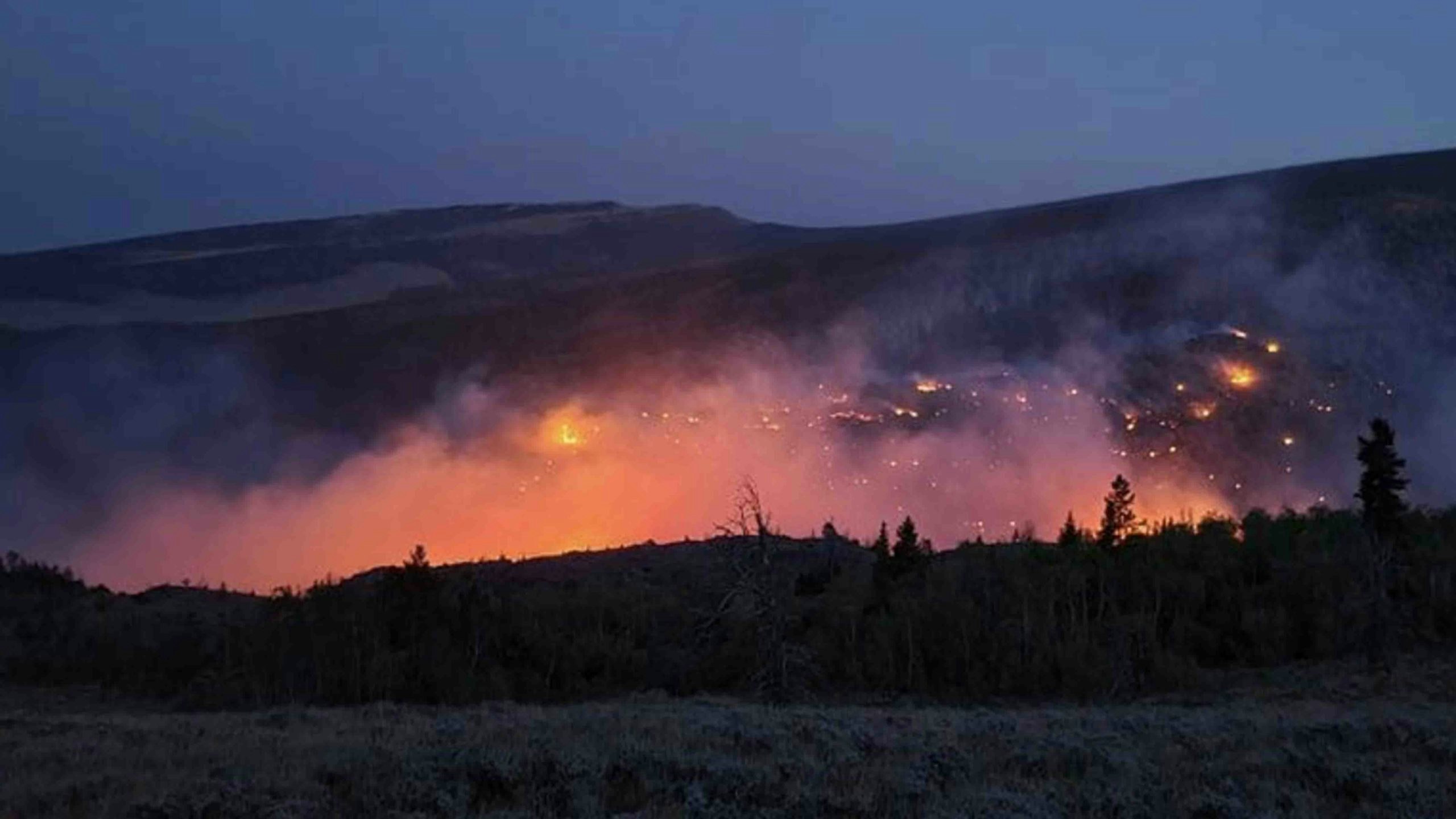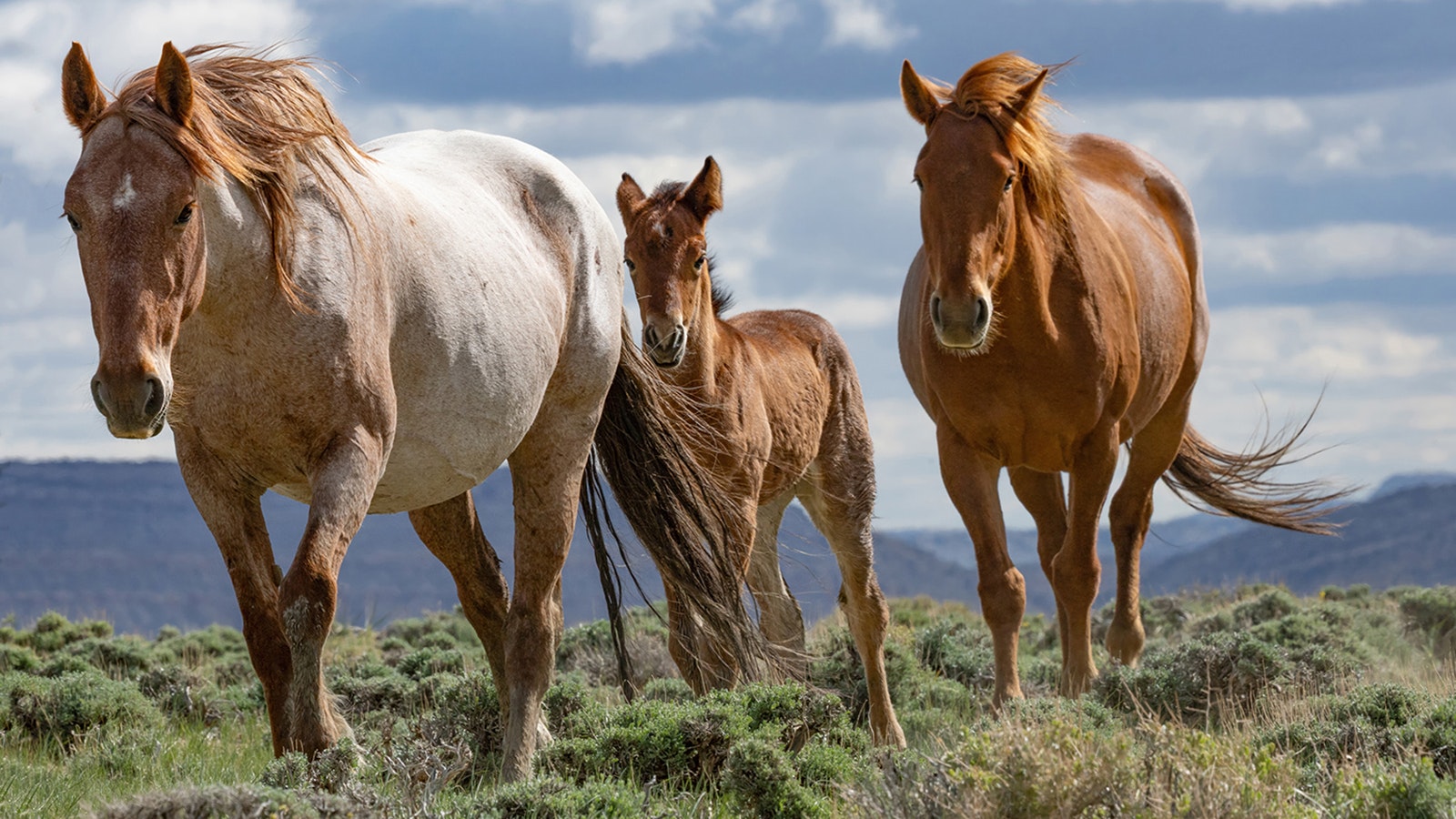Managing the materials that fuel out-of-control wildfires is the key to making sure they do not have to be fought, according to U.S. Forest Service officials.
For managers at the Shoshone National Forest, which covers more than 2.5 million acres in Wyoming, preventing fires from starting in the first place is the key for wildfire management.
Clint Dawson, assistant fire staff on the Shoshone’s north zone said that for decades, the emphasis of the Forest Service was to put out fires, rather than let nature take its course.
“Fire is a natural process,” he explained. “It’s occurred for as long as the forests have been there. And when human beings started developing in the West here, the thought was, even from the Forest Service back at the turn of the century, fires are bad.”
But in recent years, Dawson said that the agency has learned that managing the materials that fuel wildfires is the key to preventing them.
“We’re using timber sales, chain saws, equipment like that, or we’re using prescribed fire broadcast burning, or we’re lighting large acreages on fire, or slash pile burning – where we’ve accumulated fuels from some mechanical treatment, put them into a pile, let those dry and then burn those in the wintertime,” he said.
Dawson pointed out that the Shoshone National Forest has used these methods successfully in previous fire events, such as the Gunbarrel Fire between Cody and Yellowstone in 2008, as well as the Lava Mountain fire near Dubois in 2016.
“For both areas we had gone in and done a considerable amount of mechanical treatments, timber sales, removed a lot of the dead and dying trees that were up there from beetle epidemics that we had over the years,” Dawson said. “We had done some prescribed burns in a lot of areas around the values that we wanted to protect — up the North Fork there are a lot of lodges and cabins, we’ve got the highway, the power lines, just all that infrastructure.”
And, Dawson said, the work was successful, especially during the Gunbarrel Fire.
“The only real structure that was not owned by the Forest Service was a dog house that burned,” he said.
And Dawson pointed out that the Forest Service, as an agency, is figuring out that these preventive measures really do work.
“The Forest Service I think is on the right track of getting ahead of these wildfires,” he said. “Our hazardous fuels reduction has grown, probably in the last five to ten years, where it’s a line item in our budget, we get funding for it. Our funding continues to increase – our number of acres, (that’s the metric that we’re graded on, if you will, with the government) – our acreage that we have to accomplish each year seems to be increasing every year. And our target this last year was about 4,800 acres; we got just shy of 10,000 acres treated, and that’s through both mechanical and prescribed burning.”
While wary eyes watched the California wildfires burn the last two summers, Dawson explained that fuels that allowed the California disaster to burn uncontrollably are different from what Wyoming forests contain.
“In California, you can burn the same fuel bed year after year after year, it just comes back as grass, brush and whatnot,” he said. “And so they have a different problem than what we’ve got. Here we can treat something, and it can last 15 to 20 years before we need to come back and re-treat it.”
According to the Center for Disaster Philanthropy, which tracks natural disasters and their impacts, a total of 58,733 wildfires across the country burned more than 7.13 million acres in 2021 – that’s fewer than the average year-to-date to that point, which was 61,524 fires burning 7.47 million acres per year.
But even though last year saw fewer fires, the damage to property and the impact on local and federal agencies was significant, with experts saying the intensity of the fires proved difficult to fight.
That’s why the Forest Service and its partners will continue to be on guard to protect the national forests against catastrophic wildfires.
“We know they’re coming,” Dawson warned. “It’s not a matter of if, it’s when.”





